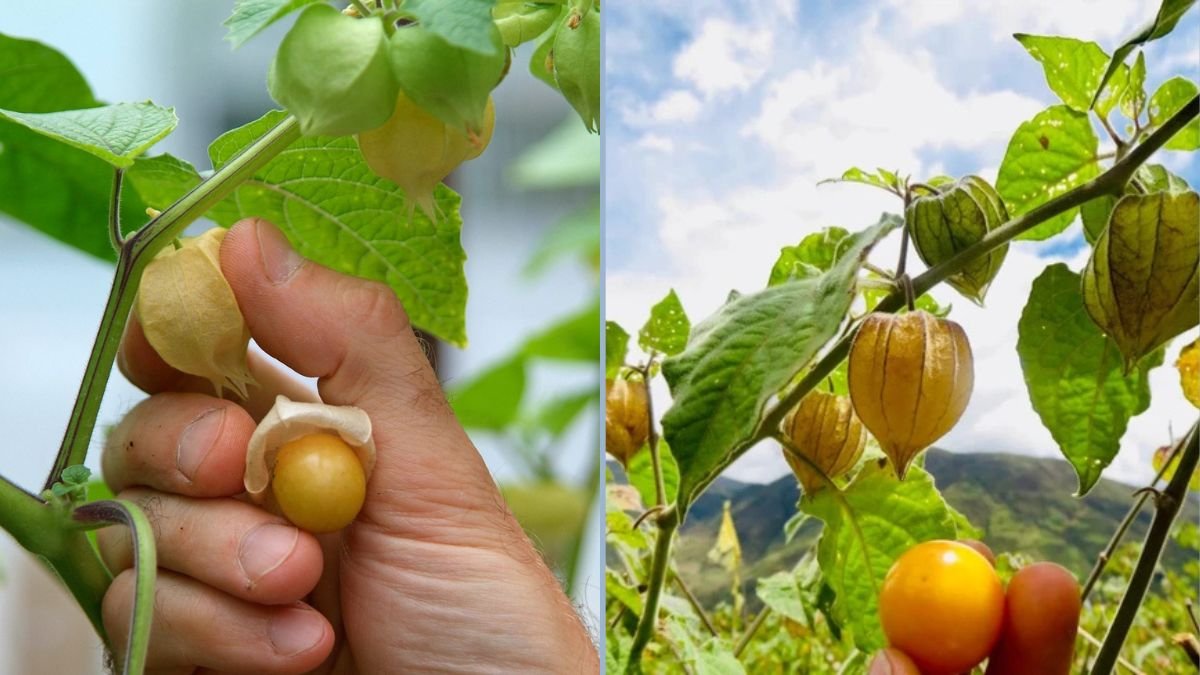Cape gooseberry, also known as Physalis peruviana, goldenberry, or ground cherry, is a tropical fruit admired for its unique sweet-tart flavor, vibrant orange berries, and health benefits. Packed with vitamins, antioxidants, and fiber, Cape gooseberries are perfect for fresh eating, jams, desserts, and smoothies.
While they grow naturally in tropical and subtropical regions, container gardening allows you to cultivate Cape gooseberry at home, even on balconies or terraces. This guide provides a step-by-step process from seed to harvest, ensuring healthy plants and abundant fruit.
1. Why Grow Cape Gooseberry at Home?
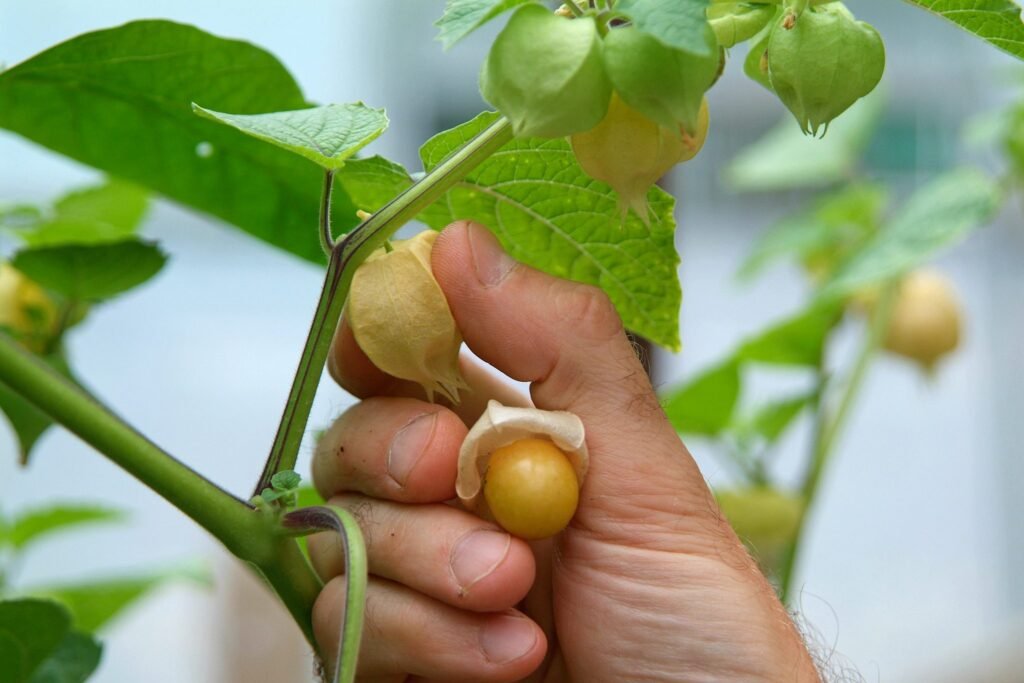
Growing Cape gooseberry at home offers several benefits:
- Fresh, organic fruits: Enjoy pesticide-free berries straight from your container.
- Nutritional value: High in vitamin C, antioxidants, and dietary fiber.
- Compact growth: Suitable for small spaces, containers, and indoor gardening.
- Low maintenance: Hardy and relatively pest-resistant plants.
- Decorative appeal: Attractive foliage and lantern-like husks enhance garden aesthetics.
Homegrown Cape gooseberries provide both nutritional and aesthetic value, making them ideal for urban gardeners.
2. Choosing the Right Variety
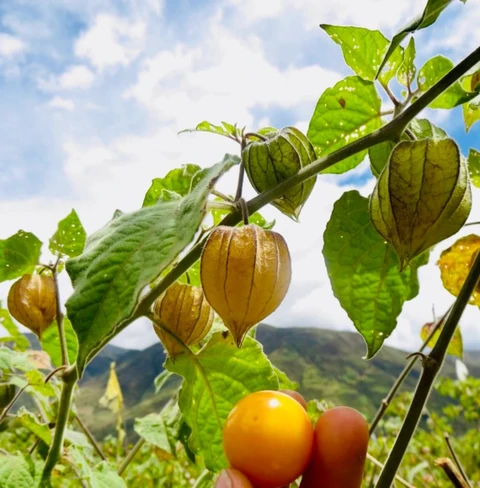
Although Cape gooseberries are generally similar, choosing the right variety helps ensure better growth and fruiting:
- Golden Cape Gooseberry: Sweet and highly productive.
- Physalis peruviana hybrid: Improved fruit size and yield.
- Local nursery varieties: Adapted to regional climates.
Selecting a suitable variety ensures healthy plants, early fruiting, and abundant harvest.
3. Propagation: Seeds
Cape gooseberries are most commonly grown from seeds:
- Seed extraction: Cut a ripe berry and collect the seeds.
- Cleaning: Wash seeds to remove pulp and allow them to dry for a day.
- Sowing: Sow seeds 0.5 cm deep in seed-starting trays or small pots filled with a light, well-draining seed mix.
- Germination: Keep soil moist; seeds germinate in 1–2 weeks under warm conditions.
💡 Tip: Use a transparent cover to maintain humidity and warmth for faster germination.
4. Choosing the Right Container
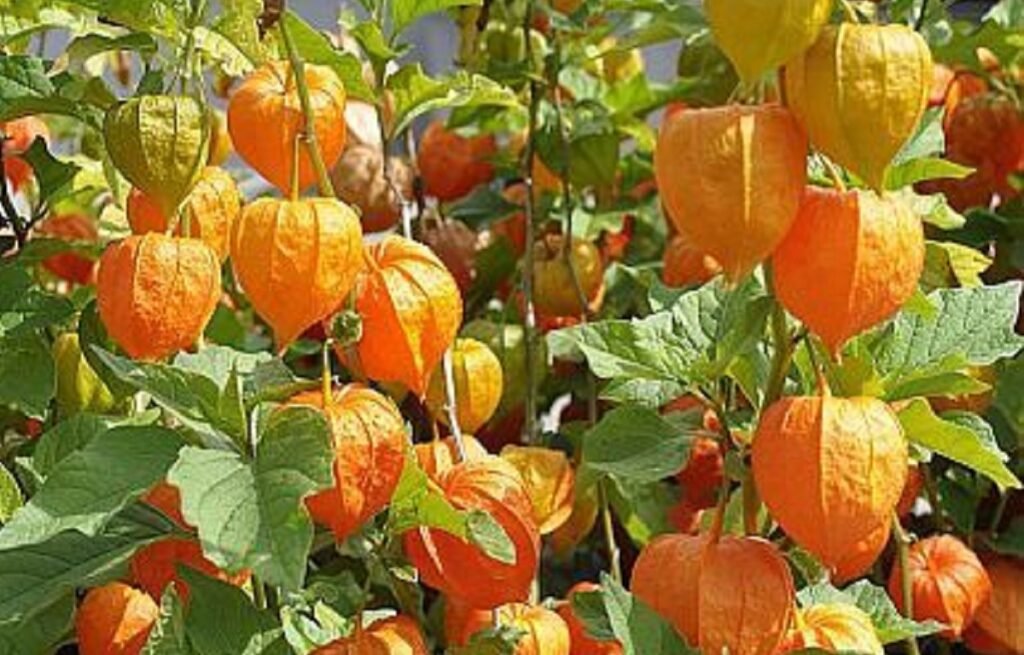
Cape gooseberries thrive in large containers that allow root expansion:
- Size: Minimum 12–16 inches in diameter and depth. Larger pots allow bigger plants and higher fruit yield.
- Material: Plastic, terracotta, or ceramic. Terracotta provides aeration but dries faster.
- Drainage: Ensure multiple holes to prevent waterlogging.
- Mobility: Lightweight containers allow repositioning for sunlight exposure.
Proper container selection ensures healthy root development and strong plant growth.
5. Preparing the Soil Mix
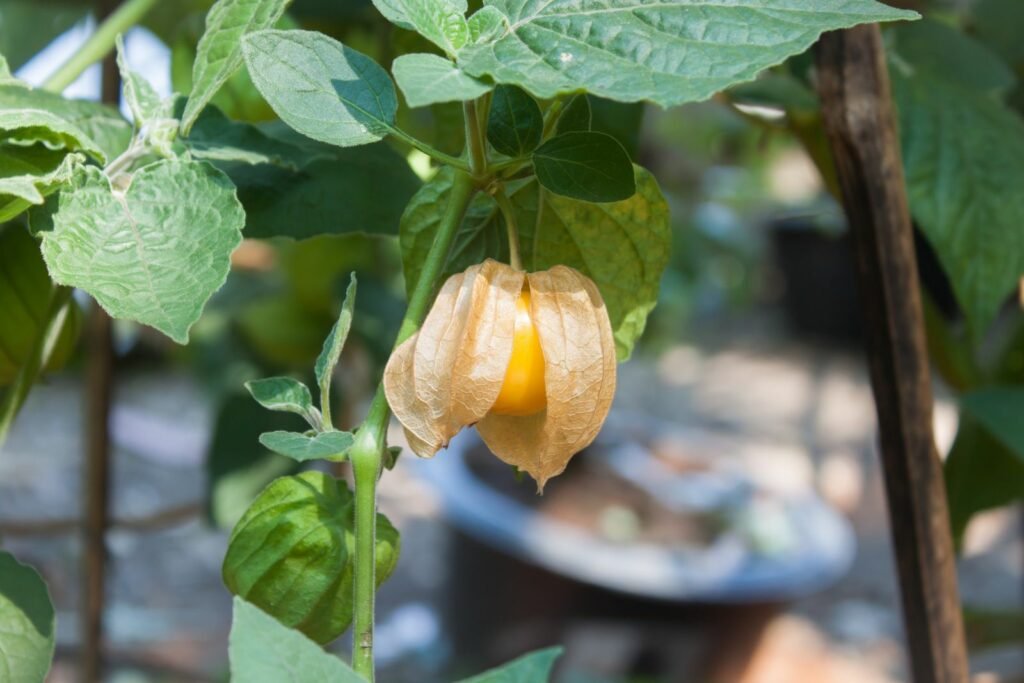
Cape gooseberries require well-draining, fertile soil:
Recommended soil mix:
- 40% garden soil or topsoil
- 30% organic compost or well-rotted manure
- 20% coir or peat moss for moisture retention
- 10% perlite or sand for drainage
💡 Tip: Avoid heavy clay soil, which can retain water and lead to root rot.
6. Transplanting Seedlings
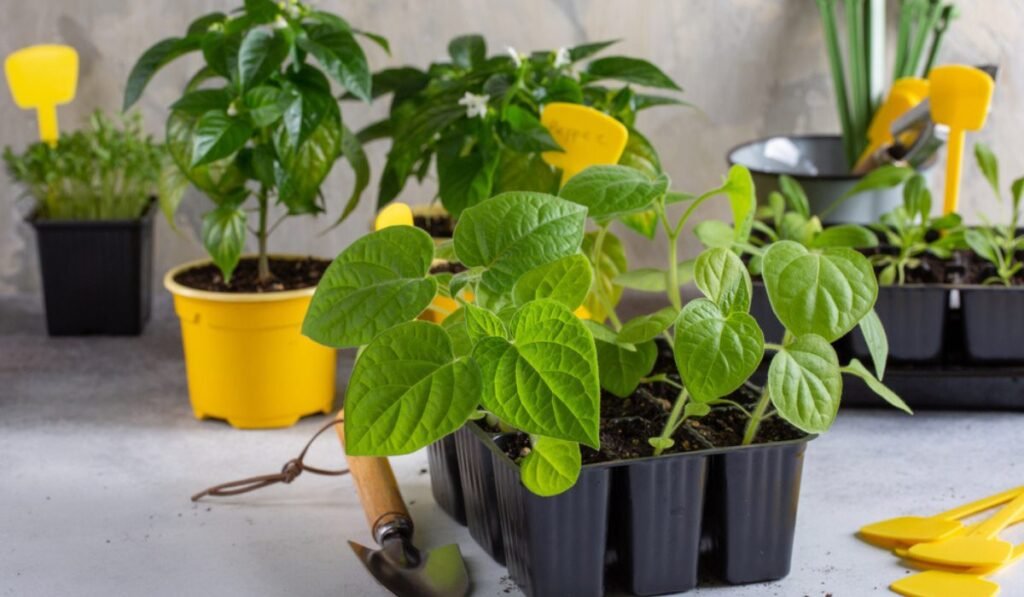
Once seedlings develop 2–3 true leaves:
- Prepare the container with the soil mix.
- Dig a small hole in the center.
- Gently transplant seedlings without damaging roots.
- Water immediately to settle the soil.
- Place in bright sunlight, preferably 6–8 hours daily.
Proper transplantation ensures strong root establishment and healthy growth.
7. Sunlight and Temperature Requirements
Cape gooseberries thrive in full sun and warm conditions:
- Sunlight: Minimum 6–8 hours of direct sunlight daily.
- Temperature: Optimal range is 20–30°C (68–86°F). Protect young plants from frost.
- Air circulation: Good airflow reduces disease risk and promotes healthy foliage.
Providing the right environment encourages vigorous growth and high fruit yield.
8. Watering Cape Gooseberry Plants
Watering is crucial, especially in container gardening:
- Keep the soil consistently moist but avoid waterlogging.
- Water deeply 2–3 times a week, adjusting for temperature and container size.
- Mulch around the base to retain moisture and regulate soil temperature.
Consistent watering promotes strong roots, healthy leaves, and abundant fruiting.
9. Fertilizing Cape Gooseberry
Fertilization supports growth, flowering, and fruiting:
- Balanced fertilizers (NPK 10-10-10): Encourage vegetative growth.
- Organic compost or manure: Enhances soil fertility.
- Frequency: Apply every 4–6 weeks during the growing season.
Proper nutrition ensures lush foliage, robust plants, and high-quality fruit.
10. Supporting Plants
Cape gooseberries can grow bushy and sprawling, so support may be necessary:
- Use stakes or small cages to support branches.
- Tie stems loosely to prevent breakage under fruit weight.
- Prune lightly to maintain shape and encourage airflow.
Support helps maximize fruit yield and prevent plant damage.
11. Pruning Cape Gooseberry Plants
Pruning improves air circulation, sunlight penetration, and fruiting:
- Remove dead, damaged, or crowded branches.
- Pinch off early flowers to encourage stronger plant growth.
- Light pruning after harvest stimulates new growth.
Well-pruned plants produce more flowers, bigger berries, and healthier foliage.
12. Flowering and Pollination
Cape gooseberries produce small yellow flowers:
- Most varieties are self-pollinating.
- Pollinators like bees enhance fruit set in open areas.
- Hand pollination can be done in indoor or balcony setups.
Proper pollination ensures maximum berry formation and quality fruits.
13. Harvesting Cape Gooseberries
Fruits are ready to harvest when the husk turns light brown and the berry is bright orange:
- Gently twist or cut fruits to avoid damaging branches.
- Harvest regularly to encourage continuous flowering and fruiting.
- Fully ripe berries have a sweet-tart flavor and firm texture.
Homegrown Cape gooseberries are perfect for fresh eating, jams, desserts, and smoothies.
14. Common Pests and Diseases
Cape gooseberries are relatively hardy but can face:
- Aphids and whiteflies: Treat with neem oil or insecticidal soap.
- Powdery mildew: Avoid wetting foliage and provide good airflow.
- Fruit fly attacks: Protect ripening berries with nets or traps.
Regular monitoring ensures healthy plants and high-quality fruits.
15. Long-Term Care for Container-Grown Cape Gooseberries
For sustained growth and productivity:
- Repot every 2–3 years to allow root expansion.
- Maintain mulching to retain soil moisture and regulate temperature.
- Fertilize seasonally to promote flowering and fruiting.
- Prune annually to manage plant size and encourage robust growth.
With proper care, Cape gooseberries can produce abundant fruits for several years, even in containers.
16. Tips for Growing Cape Gooseberries in Containers
- Use wide, deep pots to accommodate root growth.
- Provide 6–8 hours of sunlight daily for optimal flowering and fruiting.
- Avoid excessive fertilization, which may reduce fruiting.
- Remove fallen leaves and husks to prevent fungal growth.
Container cultivation allows flexibility and easy care, making Cape gooseberries perfect for urban gardens.
17. Final Thoughts: Growing Cape Gooseberries at Home
Cape gooseberries are rewarding, nutritious, and visually appealing plants for home gardeners. By starting with healthy seeds or seedlings, providing well-draining soil, sunlight, consistent watering, fertilization, and proper pruning, you can grow thriving Cape gooseberry plants in containers.
Container gardening allows urban households to experience the joy of fruit cultivation, enjoy fresh, golden berries, and create a miniature edible garden at home. With patience and consistent care, your Cape gooseberry plants will flourish, producing sweet, tangy fruits year after year.
Growing Cape gooseberries in containers is the perfect project for beginners and experienced gardeners alike. Following these step-by-step care tips ensures you can enjoy the full experience of planting, nurturing, and harvesting your own golden berries, right from your balcony, terrace, or backyard.
